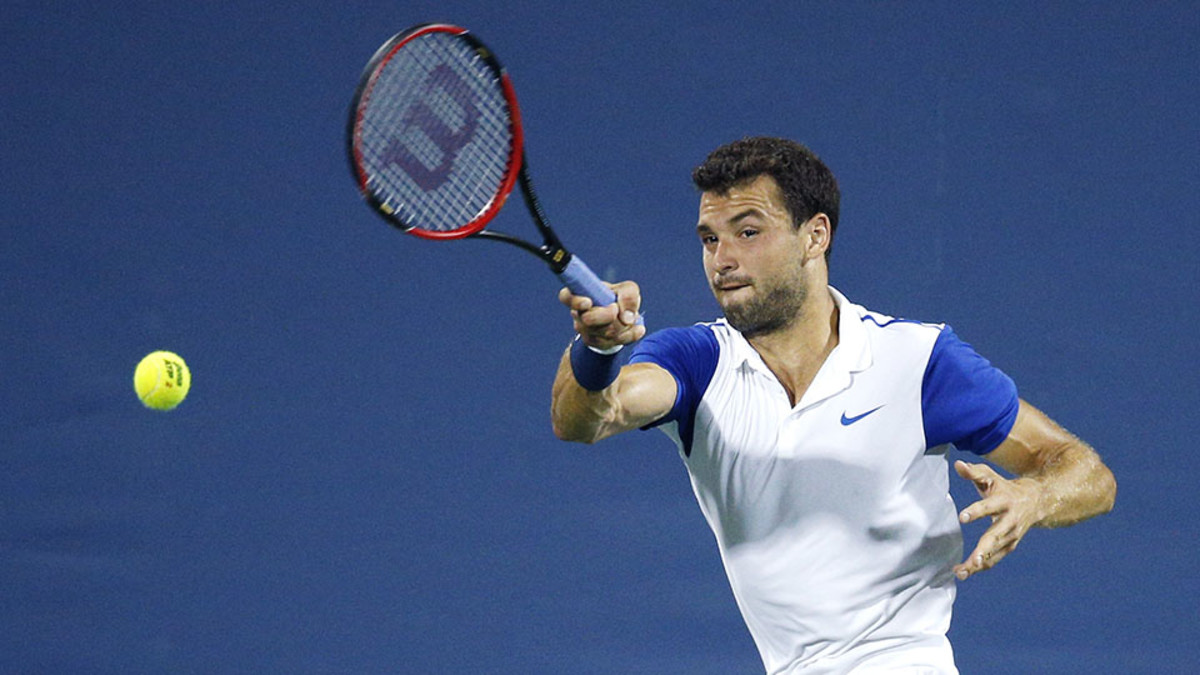
Grigor Dimitrov on the long process of making a racket change
When Grigor Dimitrov decided to change the design of his racket, he knew he was getting into a long-term relationship. He was aware that the two-year design process of creating a Wilson racket specifically for his game would bring a difficult adjustment period, but rather than worrying about the short-term effects, the 24-year-old placed his focus on the future.
“I’m pretty much like that in everything I do,” says Dimitrov, who begins his 2015 U.S. Open campaign against Matthew Ebden on Monday. “It is all about the big picture, the long term. That is why I changed my racket, in the long-term it is going to help me a lot.”
Catching up with Milos Raonic ahead of the 2015 U.S. Open
The 17th-ranked Bulgarian was heavily involved in the creation of his new Wilson Pro Staff 97S, not simply serving as a figurehead. “I’m a very detail-oriented person and I was involved in everything,” he says. “I definitely enjoyed the specifics of the racket, the balance, head size, string pattern. I can feel the racket in my hand and I want to get that feel right, to hold the grip and have it feel like an extension of my arm. This is something I say every player wants to feel.”
Dimitrov was involved with all facets of the new racket, from the fine-tuning of the technical aspect to on-court testing and cosmetics. He says he enjoyed the process and is pleased with the “masterpiece” the design team created, which releases publicly Oct. 1. He opted to jump to a 97-square-inch head size to create a long-term “ease” on his shoulder and increased stability. By adding in Wilson’s spin effect technology, he was searching for an extra bit of spin on his shots and the string pattern he devised gives him “more bite on the ball, more pop on the serve. All small things, he says, “that make a huge difference in my game.”
While involved in the technical aspect of the design, Dimitrov didn’t shy away from the visual look either. “I wanted to keep it pretty traditional,” he says. “Wilson is tradition, but I wanted something really sharp, something different when on the court that people would notice and see.”
That’s why his new design will have gold layers of string to create the logos on the racket. For this year's U.S. Open, he’ll carry 13 to 15 of each and the rackets will be strung based on the temperature of the day. “The whole process was a lot of fun,” he says. “The first time I saw it complete, it really grabbed my eye and I hope it is like that for the audience.”
The science behind creating the U.S. Open courts and signature colors
But even with two years of research and development, transitioning to a new racket is a tough proposition for a pro player. Dimitrov’s transition was no different. He says practicing with a racket is “like day and night” compared to playing with it in a tournament and the unfamiliar feel of the racket—whether it's the worry of having it wobble or the way the ball pops off the strings—takes a little bit of time to get used to.
“In practice you don’t have that pressure, that challenge of putting the ball exactly where you need it,” he says. “The precision, you are losing a little bit because you are focusing on a different aspect. At 30-all you got to make that second serve or make that pass....There were a few moments I felt a little uncomfortable because it was my first time playing with it.
"I was able to put my game and myself on the line to make sure I found the right thing."
Tim Newcomb covers stadiums, sneakers and design for Sports Illustrated. Follow him on Twitter at @tdnewcomb.




